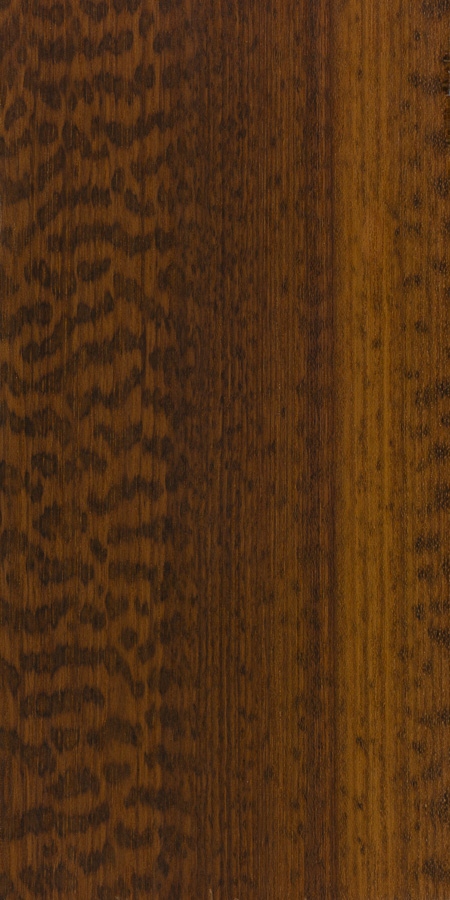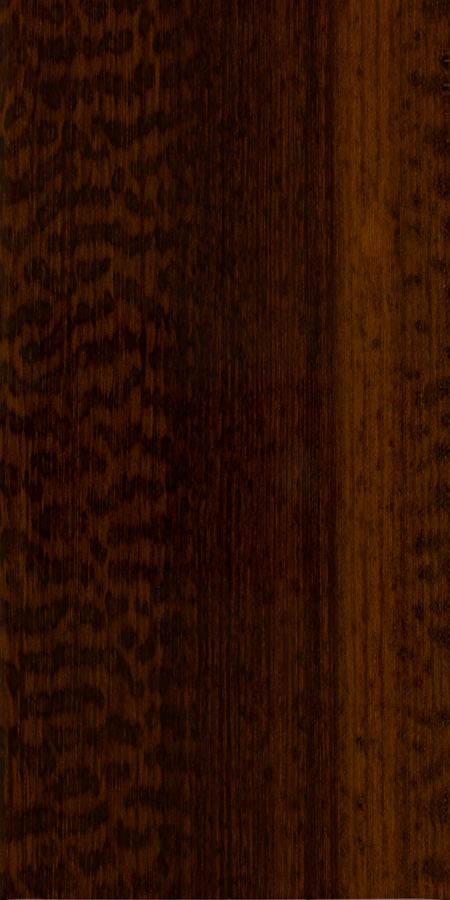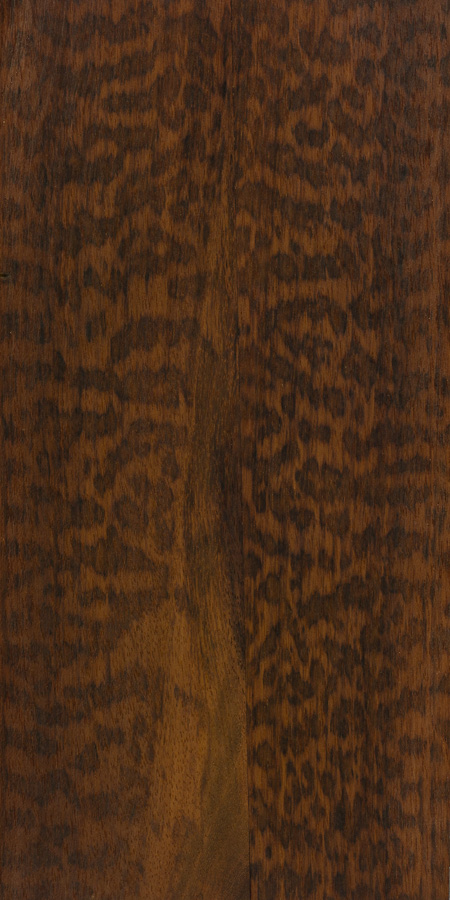Snakewood | The Wood Database (Hardwood) (original) (raw)
Snakewood (Brosimum guianense)
Click on the link "Janka Hardness" for more details.
3,800 lbf (16,900 N) Very High JANKA HARDNESS TIERS
Extremely Low: 0+ N
Very Low: 2,050+ N
Low: 3,150+ N
Medium-Low: 4,480+ N
Medium: 6,280+ N
Medium-High: 8,380+ N
High: 11,080+ N
Very High: 14,000+ N
Extremely High: 17,450+ N
Tiers are derived from CSIRO provisional strength classifications (SD1-SD8) in conjunction with the USDA's estimated hardness based on density.
Color/Appearance: Snakewood is so called for its characteristic snakeskin patterns. Wood is typically a reddish brown, with contrasting darker brown or black patches. Color tends to darken and homogenize with age and exposure; see the article on Preventing Color Changes in Exotic Woods for more information.
Grain/Texture: Grain is straight, with a fine even texture. High natural luster.
Rot Resistance: Snakewood is reported to be very durable and also resistant to insect attack, though it’s seldom used in exterior applications where durability would be an issue.
Workability: Being closely related to bloodwood, snakewood shares many of the same working properties; namely, the wood is extremely dense, and has a pronounced blunting effect on cutters. Snakewood also tends to be quite brittle and can splinter easily while being worked. Despite the difficulties of working it, snakewood turns well and finishes to a high polish.
Odor: Has a mild scent when being worked that is similar to bloodwood.
Allergies/Toxicity: Although severe reactions are quite uncommon, snakewood has been reported as a skin and respiratory irritant. See the articles Wood Allergies and Toxicity and Wood Dust Safety for more information.
Pricing/Availability: As a rare and small tree, prices for surfaced and milled snakewood that display the characteristic snakeskin pattern are perhaps the most expensive of any exotic lumber worldwide in terms of per boardfoot cost. Less figured sections of the wood are usually sold for much lower prices (under the name amourette). Snakewood is also commonly sold in full and half log forms, which typically include significant pith checking and areas of both figured and non-figured wood, which can result in high wastage.
Sustainability: This wood species is not listed in the CITES Appendices, and is reported by the IUCN as being a species of least concern.
Common Uses: Inlay, veneer, violin bows, tool handles, and other small turned or specialty objects.
Comments: One look at a highly figured piece of Brosimum _guianense_and it’s easy to see why it’s called snakewood: the dramatic specks and splotches bear a close resemblance to the skin of a snake. Such figuring can be so pronounced that it has been compared to the writing of hieroglyphics, and is sometimes called letterwood.
In addition to its colorful figure, snakewood is also among the densest and hardest of all wood species worldwide. Among woodworkers, it vies with lignum vitae as the heaviest commercial wood in the world.
Images: Drag the slider up/down to toggle between raw and finished wood.
A special thanks to Salem Barker for providing the sculpture photo of this wood species.


Snakewood (solid single piece)


Snakewood (edge-glued two piece)
Do you have images of projects made from this wood species? You can submit them to me here.
Click on the link “Porosity” for more details.
diffuse porous; growth rings generally not discernible
Click on the link “Arrangement” for more details.
solitary and radial multiples
Click on the link “Vessels” for more details.
medium to large, few; tyloses and yellowish brown deposits common
Click on the link “Parenchyma” for more details.
winged and confluent
Click on the link “Rays” for more details.
narrow width, normal spacing; rays may be just barely visible without magnification
Lookalikes/Substitutes: Figured snakewood is rarely confused with other woods as its figure is so unique. Pieces lacking figure, or composed of sapwood could be confused for other very dense hardwoods.
Notes: None.
(Aubl.) Huber ex Ducke
(Authority)

